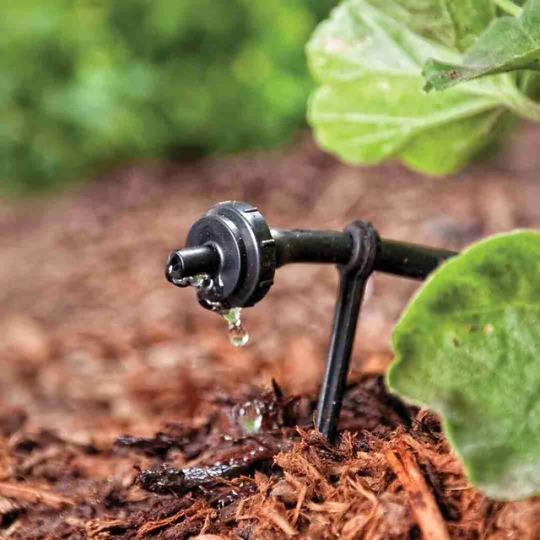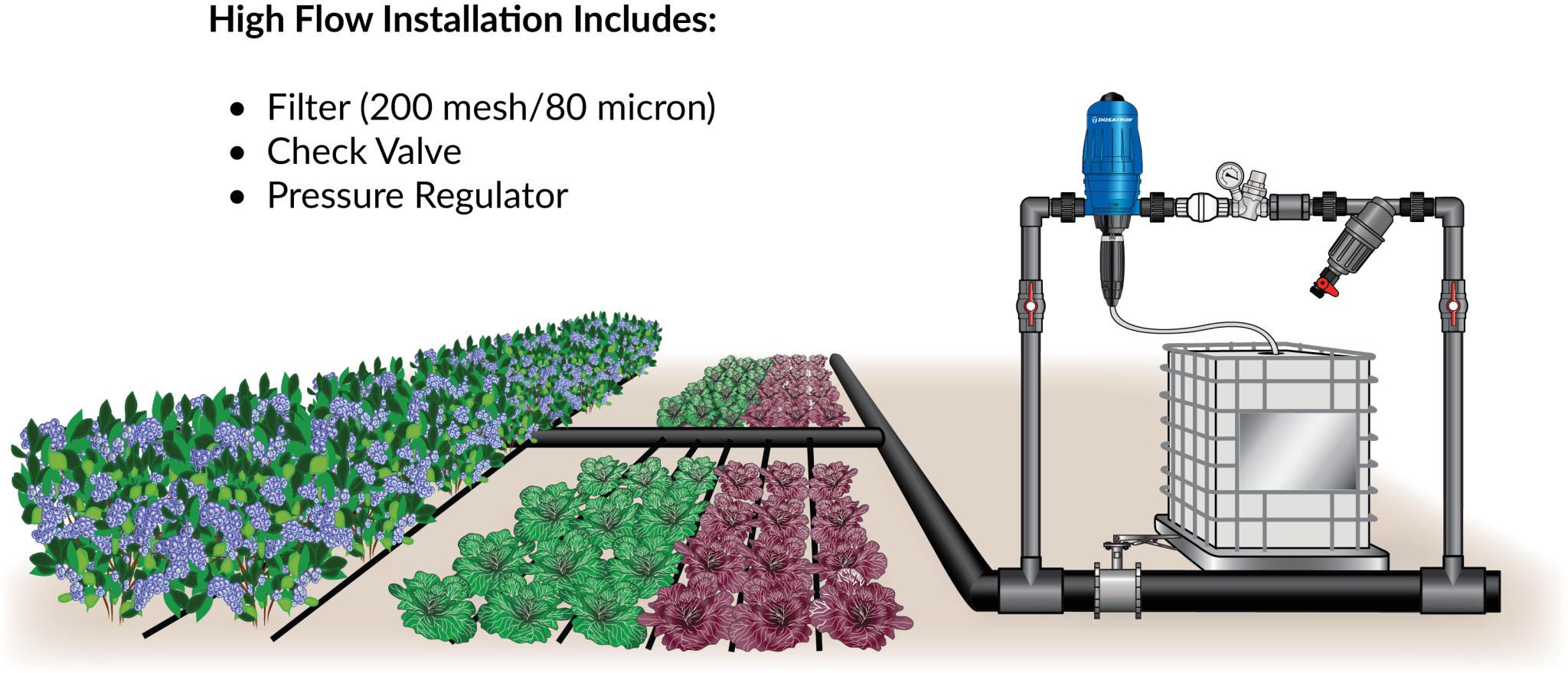Drip irrigation system is an efficient and sustainable method for watering plants, delivering water directly to the root zone. This system minimizes water wastage and ensures that plants receive the right amount of moisture for optimal growth. Whether you are a home gardener or managing a large agricultural operation, understanding the components, installation, and benefits of drip irrigation can significantly enhance your gardening or farming experience. This article explores the key aspects of drip irrigation, including the best systems, necessary supplies, and installation tips.
What is Drip Irrigation?
Drip irrigation is a method of irrigation that delivers water directly to the base of plants through a network of tubes, pipes, and emitters. Unlike traditional sprinkler systems, which can lead to water wastage due to evaporation or runoff, drip irrigation provides a slow, steady supply of water directly to the soil. This method is particularly beneficial in areas with limited water resources or in gardens and farms where water conservation is a priority.

Components of a Drip Irrigation System
- Drip Irrigation Kit:
A drip irrigation kit typically includes all the essential components needed to set up a basic system. These kits often contain tubing, emitters, connectors, and stakes. They are designed for easy installation and are available for various garden sizes, from small home gardens to larger plots of land. - Drip Irrigation Supplies:
Drip irrigation supplies include a range of components such as tubing, emitters, filters, pressure regulators, and connectors. These supplies are crucial for customizing and maintaining your drip irrigation system. High-quality supplies ensure that the system functions efficiently and lasts for many years. - Drip Irrigation Timer:
A drip irrigation timer is an essential component for automating your irrigation schedule. It allows you to set specific times for watering, ensuring that plants receive consistent moisture without manual intervention. Timers can be programmed for different zones and are available with various features, including digital displays and weather-based adjustments.
Benefits
- Water Efficiency: Drip irrigation uses less water compared to traditional methods, reducing wastage and ensuring that plants receive just the right amount of moisture.
- Enhanced Plant Growth: By delivering water directly to the root zone, drip irrigation promotes healthier plant growth and higher yields.
- Weed Control: Since water is delivered directly to the plants, the surrounding soil remains dry, reducing the growth of weeds.
- Flexibility: Drip irrigation systems can be customized to suit various garden layouts, plant types, and watering needs.
Best Drip Irrigation Systems
When selecting the best drip irrigation system, consider factors such as garden size, plant types, and water source. Some popular choices include:
- Rain Bird Drip Irrigation:
Rain Bird is a leading brand in the irrigation industry, known for its high-quality and reliable drip irrigation systems. Their products are designed for both home gardens and commercial applications, offering a range of customizable options. - Orbit Drip Irrigation Kits:
Orbit offers user-friendly drip irrigation kits that are ideal for beginners. These kits include all the necessary components for a quick and easy setup, making them a popular choice for small to medium-sized gardens. - Netafim Drip Irrigation:
Netafim is a global leader in drip irrigation technology, providing advanced systems for large-scale agricultural use. Their products are known for their durability, efficiency, and ability to conserve water.
How to Install Drip Irrigation
Installing a drip irrigation system may seem daunting, but with the right tools and guidance, it can be a straightforward process. Here’s a step-by-step guide on how to install drip irrigation:
- Plan Your Layout:
Start by sketching a layout of your garden, noting the location of plants and water sources. Determine where the mainline tubing will run and where the emitters will be placed. - Assemble the Components:
Connect the mainline tubing to your water source. Attach the pressure regulator, filter, and backflow preventer to ensure water flows smoothly without clogging the system. - Lay the Tubing:
Lay the mainline tubing along the planned routes in your garden. Secure it with stakes to keep it in place. - Install Emitters:
Punch holes in the tubing and insert the emitters at the base of each plant. Ensure the emitters are positioned correctly to deliver water directly to the root zone. - Test the System:
Turn on the water and check for leaks or clogs. Adjust the emitters as needed to ensure even water distribution. - Set the Timer:
If using a drip irrigation timer, program it to water your plants at optimal times. Early morning or late evening is ideal to minimize evaporation.
Cost of Drip Irrigation Systems
The cost of a drip irrigation system can vary significantly depending on the size of the area being irrigated, the type of plants, and the complexity of the system. For small home gardens, a basic drip irrigation kit may cost between $20 to $50, which includes tubing, emitters, and connectors. For larger gardens or small farms, more advanced systems with additional features like automated timers and pressure regulators might range from $100 to $500. Commercial-grade drip irrigation systems, often used in large-scale agricultural operations, can cost thousands of dollars due to the need for extensive tubing, high-quality emitters, and sophisticated control systems. While the initial investment may seem high, the long-term savings in water costs, reduced labor, and improved crop yields often make drip irrigation a cost-effective solution for gardeners and farmers alike. Additionally, many suppliers offer drip irrigation supplies individually, allowing users to gradually expand or upgrade their systems as needed.
Maintenance Tips
Regular maintenance is essential to keep your drip irrigation system functioning efficiently:
- Check for Leaks: Periodically inspect the system for leaks, especially at connections and emitters.
- Clean the Filters: Clean the filters regularly to prevent clogging and ensure smooth water flow.
- Adjust the Emitters: As plants grow, you may need to adjust the emitters to ensure water reaches the root zone effectively.
Using Fertilizer with Drip Irrigation

Integrating fertilizer application with a drip irrigation system, a process known as fertigation, is an efficient way to nourish plants while conserving resources. Fertigation involves injecting water-soluble fertilizers directly into the drip irrigation lines, allowing nutrients to be delivered precisely to the plant roots along with the water. This method ensures that plants receive consistent and targeted nutrition, reducing the risk of over-fertilization and nutrient runoff. To use fertilizer with drip irrigation, start by choosing a water-soluble fertilizer suitable for your plants. Install a fertilizer injector or a venturi system into the mainline of your drip irrigation setup. As the system runs, the fertilizer mixes with the irrigation water and is evenly distributed to each plant. Regular monitoring and adjustments may be necessary to match the fertilizer concentration with the specific needs of your crops, ensuring optimal growth and productivity. This method not only saves time but also maximizes the effectiveness of both water and fertilizer, promoting healthier and more robust plants.
Conclusion
Drip irrigation is a highly efficient and sustainable way to water your garden or farm. By understanding the components, benefits, and installation process, you can set up a system that saves water, reduces labor, and promotes healthy plant growth. Whether you choose a Rain Bird drip irrigation system or assemble your own using drip irrigation supplies, the investment in this method will pay off in the long run, providing you with lush, healthy plants and a more sustainable garden.
